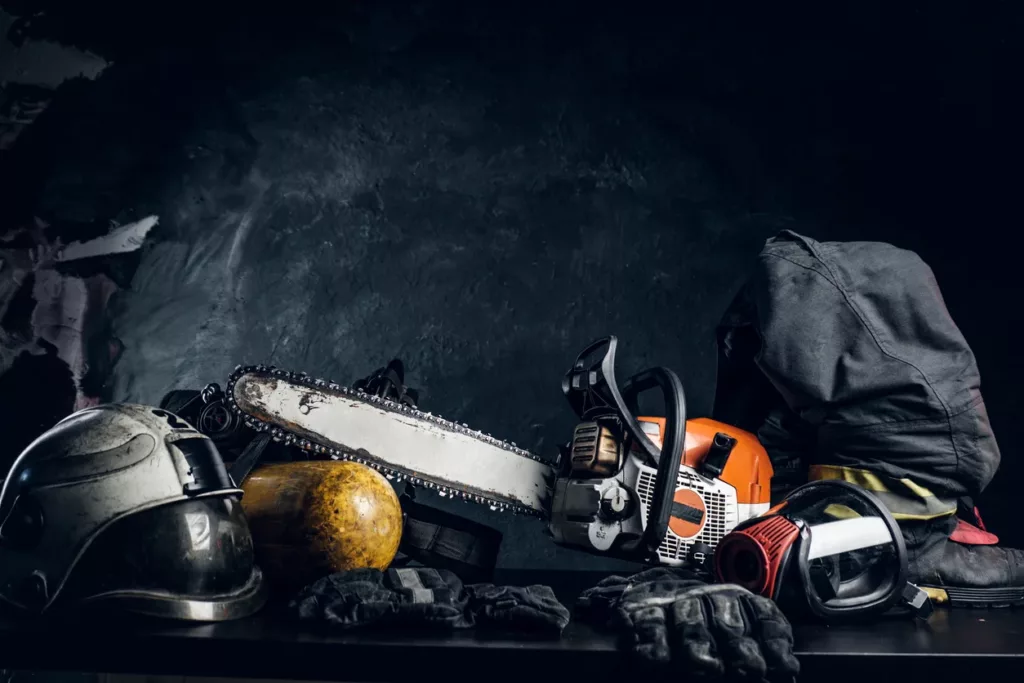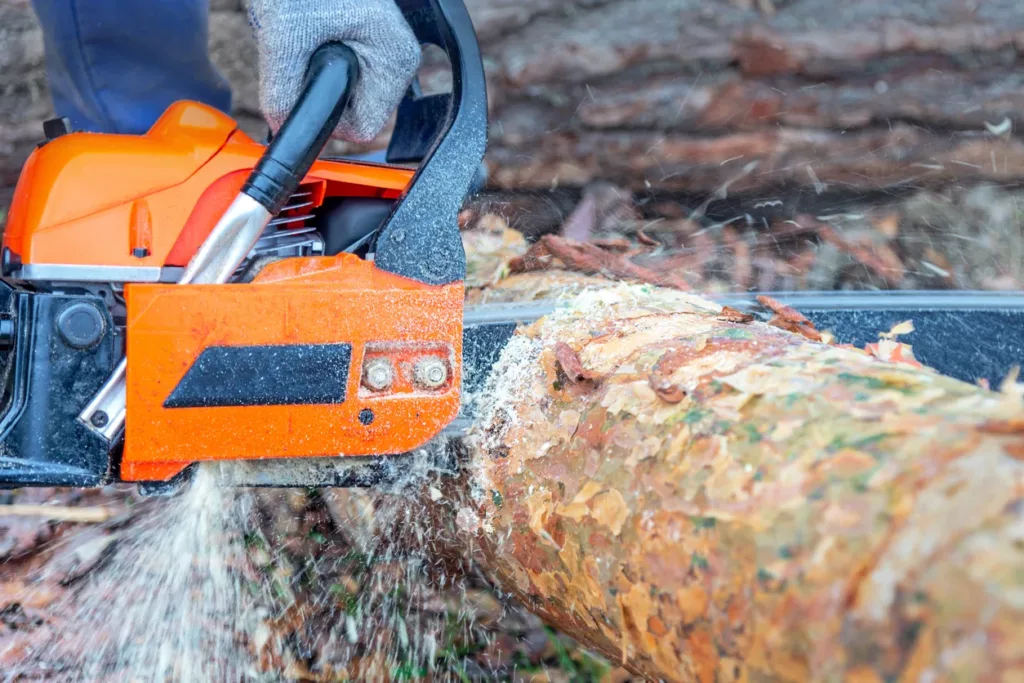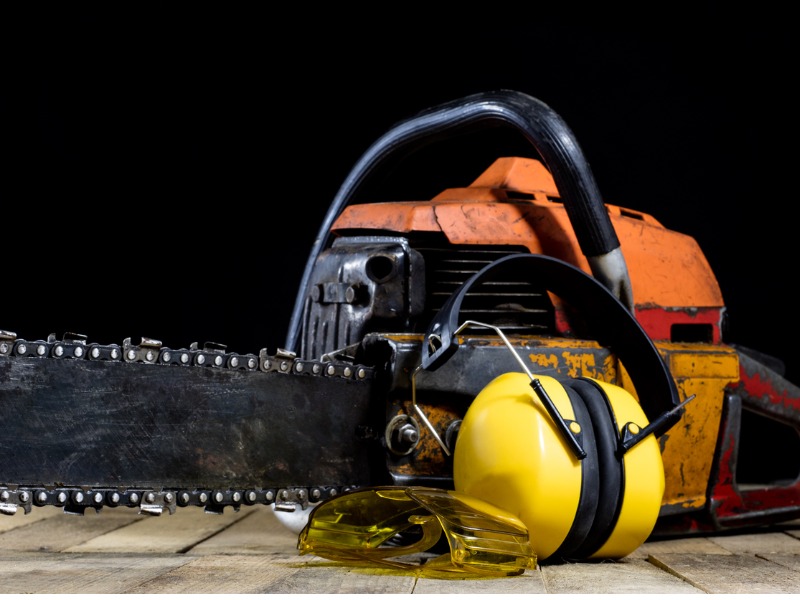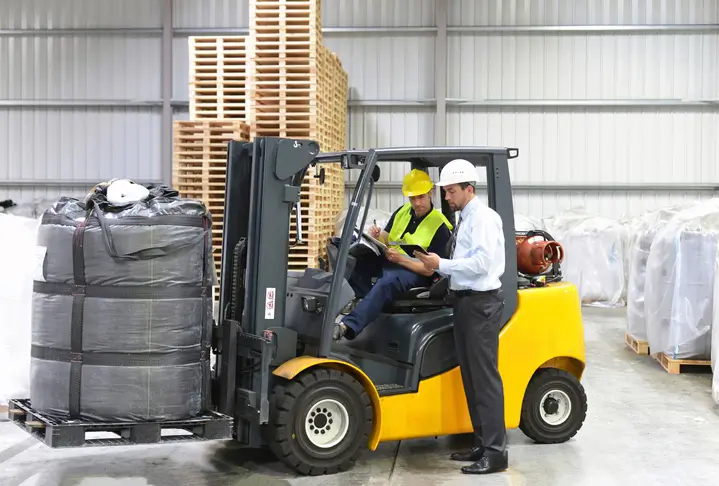A Guide To Chainsaw Safety And Logging
Logging is an extremely hazardous profession. The National Institute for Occupational Safety and Health (NIOSH) has consistently ranked it as one of the most hazardous industries. Logging professionals naturally make a lot of use of chainsaws as a part of their profession. So chainsaw safety is a major point of concern in the logging industry.
Chainsaws have many of the same safety features as other engine-driven power equipment. To boost chainsaw safety, manufacturers have devised a slew of design elements. Some characteristics have become de facto standards. While regulators have incorporated other features into law. The best practice is for an operator to inspect the saw before starting work. The operator should only operate it if all of the safety measures are working properly. So incorporating these measures offers considerable commercial benefits to manufacturers. Manufacturers aim to prevent kickback (chain and bar design) or reduce the danger of harm if it does occur (chain brakes).
Here we will be examining the various aspects of chainsaw safety.

Chainsaw Safety: It all starts with the Chain
Manufacturers should properly match the guide bar and the saw before the chain can be used. For each model of chainsaw, manufacturers generally specify the appropriate chain type. So properly sharpening the chain of the chainsaw will ensure maximum safety. So the depth gauge setting is an important sharpening parameter. Each cutting teeth has a tiny steel protuberance in front of it that serves as a depth gauge. The height difference between the leading cutting edge and the depth gauge determines the thickness of the wood chip taken by the cutter. If the depth gauge is too low, the cutter bites into the wood too deeply, making the saw harder to control and increasing the risk of kickback.
Manufacturers place guard links in front of each cutter link on some chains to enhance chainsaw safety. So the depth gauge’s leading-edge is less likely to snag on small-diameter objects like small branches, or to interact with ordinary timber if pushed into contact with it, thanks to the guard link.
Chainsaw Bars
Reducing kickback will greatly enhance chainsaw safety. Kickback is basically caused by cutting with the chain in the “kickback zone” on the bar, the upper quarter of the nose. Some manufacturers add a “tip protector” to avoid the user’s contact with this whole area. All cutting produces a reaction force on the chainsaw. Usually, this should be the lower edge of the bar, where the chain is traveling towards the saw and the reaction tends to pull the saw safely towards the log, against the spur dogs. If the chain is moving downwards, like at the tip of the bar, the same reaction force now acts upwards. This will cause a kickback upwards.
Tip protectors are metal or plastic devices that go over the bar tip of small, domestic-class saws. While these are effective, they limit the types and capacity of cuts that the saw can make. Pole pruners and one-handed battery-powered saws for pruning, hedge laying, and other tasks benefit from them. Loggers use the tip protector’s hooked snout to “grip” branches for cutting. This isn’t a big deal because these little saws aren’t utilized for cuts where the bar tip is buried.
Chainsaw carving frequently uses plunge cuts and cuts on the bar’s tip. This helps in enhancing chainsaw safety. The amount of chain and hence the force created during a kickback can be lowered simply by lowering the diameter of the chain nose. Manufacturers offer specialty carving bars with little pointed noses.

Chain Break
Chain brakes place a steel brake band around the driven clutch drum to prevent the saw’s cutting chain from moving. Large springs provide clamping force for the braking band. The chain brake has two functions. Loggers use chain brakes to secure the chain when changing positions, transitioning between cuts, or beginning a cold saw. This requires a partially open throttle. Otherwise, uncontrolled chain movement, a serious hazard in earlier saws, would occur. In kickback conditions, the chain brake can engage to protect the operator from being struck by a running chain.
Being struck by a static chain can result in catastrophic harm, so everything that can be done to reduce the often dreadful injuries caused by contact with a moving chain is of great advantage to operators. Kickback injuries frequently occur to the head, face, neck, and shoulders; these injuries are usually quite serious, often disfiguring, and occasionally deadly.
The chain brake is primarily controlled by pushing the top-hand guard forward to apply the brake and pulling it back to disengage it. In an emergency, the spring-loaded mechanism provides for forceful braking and may bring a chain to a halt in a fraction of a second. As a result, it may be necessary to use a lot of force to reset.
Furthermore, having an OSHA 30 card will give you an upper hand over other employees since employers prefer OSHA-certified employees.







